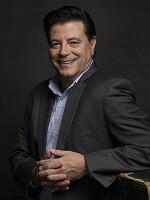Farmington’s Hill-Stead Museum was built in 1901 by pioneering female architect, Theodate Pope Riddle. She designed the Colonial-Revival style house for her parents, Ada and Alfred Pope. While there is a wealth of information about the life of Theodate, much less is known about her father, Alfred. A new exhibit in the museum’s new gallery space helps flesh out the life of Alfred Pope, including his remarkable knack for collecting important works of art despite very little formal education.
“Alfred Pope: An Evolution of Ingenuity,” not only offers fresh details about the man and his lasting influence over his daughter, but it also attempts to re-create his collection of about 40 important works of impressionist art. Most of his collection was sold off through the years for various reasons and is in the hands of private owners around the world. For the exhibit, many of those owners lent the museum paintings and drawings that once belonged to Pope, including works by Claude Monet, Mary Cassatt, Edgar Degas and others.
Anna Swinbourne, executive director and CEO of the Hill-Stead, says Pope got the collecting bug while on vacation in Paris in 1888.
“He was on a trip through Europe with his wife and his daughter, who had just graduated from Miss Porter’s [School], they were on her grand tour,” said Swinbourne. “And it was through the course of that trip that he buys his first Monet, meets the artist and becomes an art collector.”
Swinbourne said that unlike other art collectors of the day, who were keen on collecting works by 16th- and 17th-century masters, Pope naturally gravitated toward more cutting-edge, up-and-coming artists like Monet and Degas.
“He’s only buying art by his contemporaries, these young artists that so few people in the United States even knew about in the 1880’s and 1890s,” said Swinbourne. “He’s not mitigating the risk of that with a Rembrandt or Goya, something established.”
Pope’s passion for impressionist art would lead to lasting friendships with important artists like Cassatt and James Whistler, who helped shape his collection.
“Alfred Pope: An Evolution of Ingenuity” runs through Feb.17 at the Hill-Stead Museum in Farmington.





